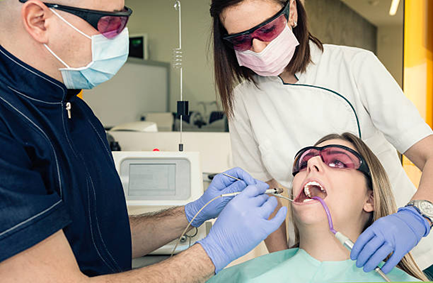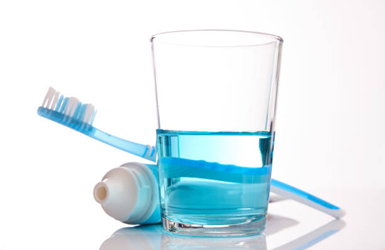Dental procedures once associated with pain, bleeding, and long recovery times have evolved remarkably with modern technology. One such breakthrough is laser therapy in dental pain management, a minimally invasive and precise technique transforming how patients experience dental care.
With over 29 years of clinical excellence, Dr. Manjul Jain, an experienced dentist in Andheri, Mumbai, has been at the forefront of this change. Since 2013, his clinic has incorporated advanced soft tissue diode lasers to perform pain-free procedures — from gum surgeries and root canal sterilization to sensitivity-free whitening.
“Laser dentistry bridges precision with comfort, helping patients heal faster and experience minimal discomfort while ensuring clinical accuracy,” says Dr. Manjul Jain, Founder of Metro Dental Speciality Clinic.
Common Dental Conditions Treated with Laser Therapy

Laser therapy has wide-ranging applications in dentistry. It is not limited to cosmetic procedures — it is equally effective for pain relief and tissue repair. Common conditions where lasers play a key role include:
- Gum disease (Periodontitis and Gingivitis): Lasers remove infected tissue, kill bacteria, and promote gum reattachment with minimal bleeding.
- Root canal therapy: Lasers sterilize the canal system, reducing post-procedure pain and the risk of reinfection.
- Tooth sensitivity: Sealing exposed dentin tubules with lasers offers long-term relief from sensitivity.
- Mouth ulcers and cold sores: Laser energy helps reduce pain and accelerate healing.
- Temporomandibular Joint (TMJ) pain: Low-level laser therapy alleviates inflammation and discomfort in the jaw joint.
- Soft tissue surgeries: Frenectomy, crown lengthening, and gum reshaping are performed with minimal bleeding and faster recovery.
Benefits of Laser Therapy for Pain Relief
The integration of laser therapy in pain management has transformed how dental pain is treated and prevented. Some of its advantages include:
- Minimized pain and discomfort: Laser energy seals nerve endings during the procedure, resulting in less postoperative pain.
- Reduced need for anesthesia: Many minor procedures can be performed without injections.
- Faster healing: Laser treatments stimulate tissue regeneration, leading to quicker recovery.
- Less bleeding and swelling: The laser cauterizes blood vessels as it works, ensuring a cleaner surgical field.
- Precise targeting: Lasers remove diseased tissue while preserving surrounding healthy structures.
- Decreased risk of infection: High-energy laser beams sterilize the treatment area, preventing bacterial growth.
Why Dentists Prefer Laser Over Traditional Techniques
Traditional dental tools often cause vibrations, pressure, and heat — the primary sources of discomfort during procedures. Laser therapy, in contrast, uses focused light energy to cut, vaporize, or shape tissues with unmatched precision.
For dentists, this means better control and accuracy. For patients, it translates to:
- No vibration or drilling noise
- Minimal bleeding and swelling
- Shorter appointments and quicker recovery
- Lower risk of complications
Clinically, laser therapy supports better outcomes in periodontal surgeries, endodontic treatments, and cosmetic procedures. This dual advantage of precision and comfort is why many progressive dental practices have adopted laser technology as a standard part of treatment.
What to Expect During a Laser Dental Procedure

- Initial assessment: The dentist evaluates your oral condition and determines if laser therapy is suitable for your needs.
- Preparation: Depending on the procedure, you may not require anesthesia. Protective glasses are worn during treatment.
- Laser application: The laser device emits a focused beam that targets the affected area. You may feel mild warmth or tingling, but no discomfort.
- Completion: Since lasers simultaneously cut and coagulate tissue, there’s minimal bleeding.
- Post-treatment care: You can often resume normal activities immediately, with little to no swelling.
Safety and Effectiveness of Dental Laser Treatments
- Use of protective eyewear during treatment.
- Controlled energy levels to avoid tissue damage.
- Precise calibration of laser parameters based on the procedure.
Post-Treatment Care and Recovery Tips by Dr. Manjul Jain

- Maintain oral hygiene: Keep your mouth clean using a gentle rinse as advised. Avoid vigorous brushing near the treated site.
- Soft diet: Stick to soft, cool foods for a day or two to minimize irritation.
- Avoid smoking and alcohol: These slow down the healing process.
- Stay hydrated: Adequate hydration supports tissue repair.
- Follow up: Attend your scheduled follow-up to ensure the tissue is healing properly.
Conclusion
Laser technology has changed the landscape of modern dentistry, allowing pain-free, precise, and faster treatments. Laser therapy in dental pain management offers a combination of comfort, clinical efficiency, and long-term results.
At Metro Dental Speciality Clinic, Dr. Manjul Jain integrates over two decades of expertise with advanced laser technology to deliver gentle yet effective care. From routine gum treatments to complex procedures, patients benefit from reduced pain, shorter healing times, and improved oral health.
FAQs
1. Is laser therapy suitable for all dental procedures?
2. Does laser dental treatment hurt?
3. Are laser dental treatments safe?
4. How long does recovery take after a laser procedure?
5. Is laser therapy more expensive than traditional treatment?
Reference
https://www.healthline.com/health/laser-dentistry
https://pmc.ncbi.nlm.nih.gov/articles/PMC11674728/
Disclaimer: The information shared in this content is for educational purposes and not for promotional use.

